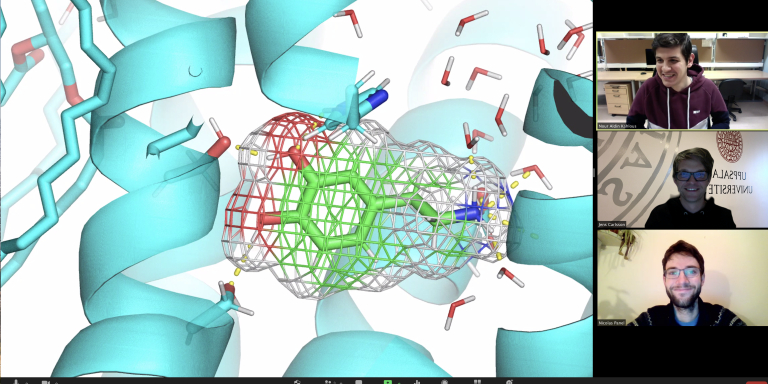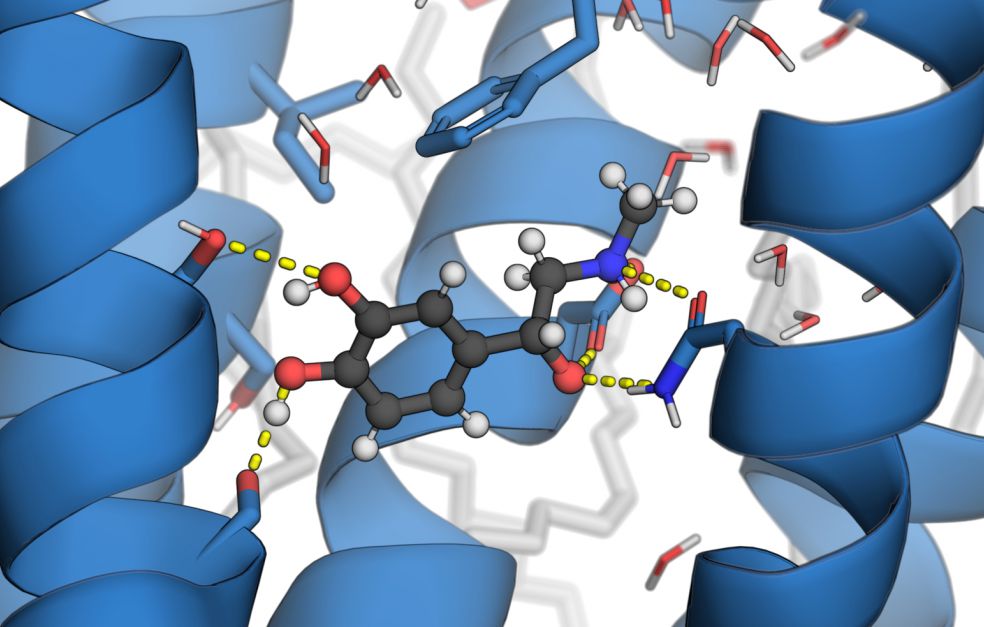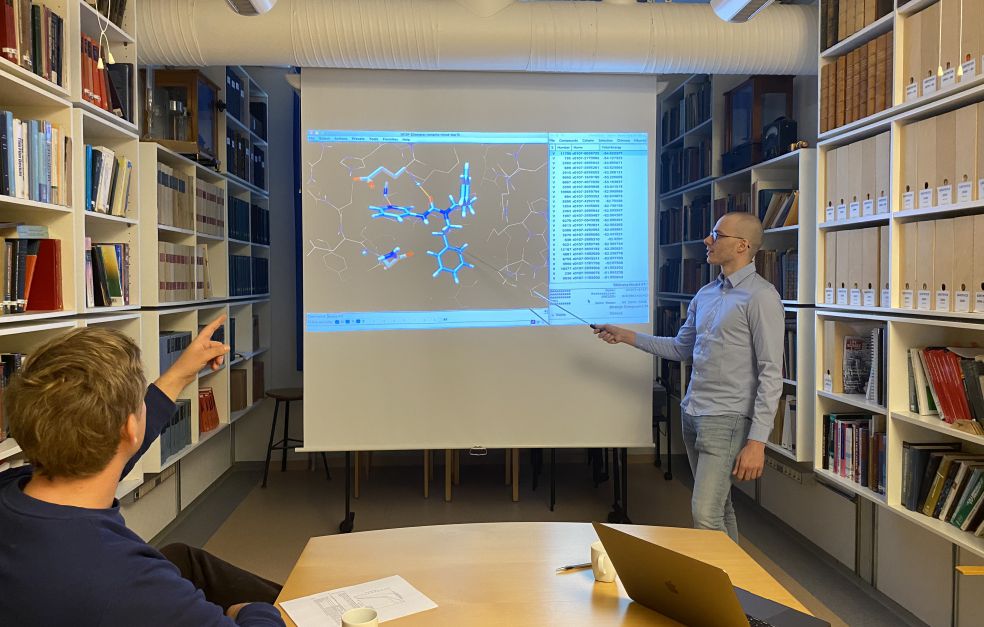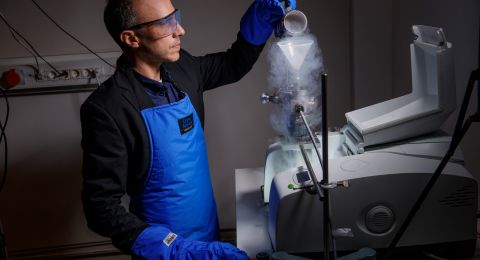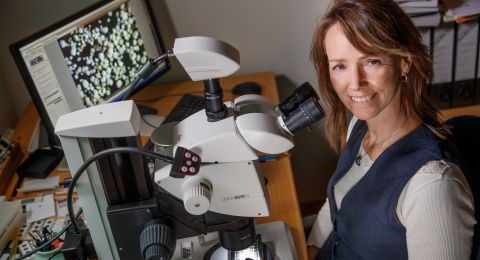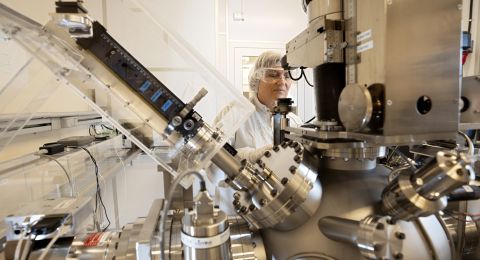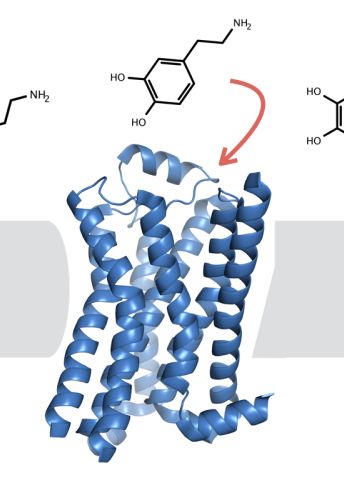
Project grant 2019
Knowledge of the body’s ability to distinguish between adrenaline and dopamine may lead to new therapeutics
Principal investigator:
Associate Professor Jens Carlsson
Co-investigators:
Uppsala University
Dan Larhammar
KTH Royal Institute of Technology
Lucie Delemotte
Karolinska Institutet
Per Svenningsson
Institution:
Uppsala University
Grant in SEK:
SEK 28 million over five years
Two signal substances – adrenaline and dopamine – have attracted Carlsson’s interest. They resemble one another in many ways. Yet receptors on the cell surface have no problem recognizing the right signal substance. It triggers a chemical process that communicates with the interior of the cell to co-ordinate various functions – anything from metabolism to bodily movements.
“It’s amazing that the receptors know exactly which molecules to bind to,” says Carlsson, who is a molecular biologist.
As an example, he mentions that dopamine receptors bind to dopamine, which affects our mood. But if we are out taking an evening stroll and a cat jumps out in front of us, the receptor activated is the one that detects adrenaline, causing us to flee – or kill the cat!
“During the course of evolution this has been a beneficial reaction. Anyone who didn’t flee from the lion on the savanna got eaten,” Carlsson explains.
Carlsson once happened to bump into fellow scientist Dan Larhammar in a corridor at Uppsala University, and took the opportunity to ask him which receptor was the very first, historically speaking. Larhammar could not answer offhand, even though he researches on signal substances in the brain, specializing in evolution.
They continued their discussion via e-mail. After a while, the conversation was expanded to include Per Svenningsson, a neurologist, and Lucie Delemotte, a physicist. Together, they applied for and were awarded a project grant by Knut and Alice Wallenberg Foundation to explore the body’s ability to distinguish between adrenaline och dopamine.
“It was exciting to bring together an evolutionary biologist, a doctor and a researcher engaged in computer simulations. We have different backgrounds, different competencies, and have never worked together before. So we had no earlier findings we could produce. We really didn’t think we would be awarded a project grant,” Carlsson recalls.
How does the signal find its way?
The Swedish neuroscientist Arvid Carlsson was awarded the Nobel Prize in Physiology and Medicine in 2000 for the discovery that dopamine plays a major part in control of our movements. He also showed that Parkinson’s disease is caused by dopamine deficiency in certain parts of the brain. This led to the development of drugs capable of altering the levels of dopamine and other signal substances.
“Our research is to some extent based on Arvid Carlsson’s discoveries. We are continuing where he left off,” Carlsson says.
Adrenaline and dopamine are two of the hundreds of hormones and signal substances that help the body’s cells to work together. They bind to a receptor in the cell surface.
Many of the receptors share the same evolutionary origin and belong to a large family of proteins that activate “G proteins” inside the cells. G proteins determine how the recipient cell will react.
The G protein-couple receptors make up one of the largest gene families in the DNA of humans and other vertebrates. Humans have over 800 such receptors.
“Many important medicines act via receptors. That’s why it’s essential to gain an in-depth understanding of the process by which a receptor recognizes a substance, and how this signal system arose and has evolved.”
Adrenaline and noradrenaline bind to a family of nine receptors in humans. The dopamine molecule has five separate receptors. All of them belong to a class of chemicals called amines.
The researchers would like to know how these 14 receptors can distinguish between adrenaline, noradrenaline and dopamine, as well as other signal substances in the human body.
“To find out, we’re going to make evolutionary comparisons of the receptors’ amino acid sequences and three-dimensional structures.”
Several of the receptors will be examined by measuring the extent to which amines and similar substances bind to them, and how effectively they are able to activate the receptors. The next step will be for the researchers to ascertain which amino acids in the receptors play the greatest part in binding amines and activating G proteins.
“These studies will also enable us to figure out what the original receptors looked like before the advent of vertebrates over 500 million year ago, and to compare them with present-day variants.”
Creating a brand-new receptor
It sounds like pure science fiction when Carlsson explains how the researchers plan to create a completely new receptor. He compares it with the difference between driving a car and being able to build one from scratch.
“You don’t understand a car just because you can drive it. It’s much harder to build a new car and understand the details of how it works. That’s what we want to achieve in our understanding of the communication between signal substances and receptors.”
If the researchers can create a brand-new receptor that recognizes another molecule, they also expect to be able to develop efficacious drugs without serious side-effects.
“Receptors like these could be used in future targeted gene therapy, particularly for Parkinson’s disease. This would be a complement or alternative to current therapies,” Carlsson says.
Text Carin Mannberg-Zackari
Translation Maxwell Arding
Photo Jens Carlsson, Nina Carlsson, Niklas Norberg Wirtén
